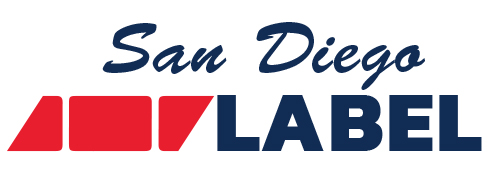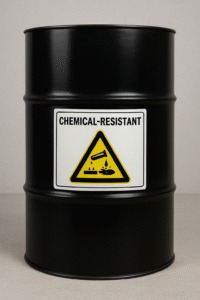Intro
Not all durable labels are created equal. In industrial, laboratory, and harsh environments, standard labels can peel, fade, or smear — and when that happens, compliance fails.
In this guide, we’ll explain how durable labels keep businesses compliant through chemical exposure, extreme cold, and heavy wear.. For an overview of compliance across all industries, see our Complete Guide to Product Label Compliance.
Why Durability = Compliance
A label that doesn’t last is just as noncompliant as one missing required information. Regulations under OSHA’s GHS for chemicals and the FDA for labs require labels to remain readable and intact for the full product lifecycle.
Therefore, choosing durable labels built for your conditions is a compliance requirement, not an option.
👉 Learn more about OSHA’s Hazard Communication Standard
Chemical-Resistant Durable Labels
In addition, labels on solvents, cleaning supplies, and lab chemicals must resist smudging, peeling, and fading when exposed to harsh substances.
GHS and OSHA rules demand that hazard information remain clear at all times. Durable labels often achieve this through laminations, UV coatings, or solvent-resistant films. As a result, they maintain legibility and protect your data in corrosive conditions.
Temperature-Resistant Durable Labels
However, chemicals aren’t the only challenge. Many environments expose labels to extreme hot or cold temperatures:
-
Biotech samples may require cryogenic storage at –80°C.
-
Industrial applications often involve high heat, steam, or sterilization.
Because of this, durable labels must combine freezer-safe adhesives and heat-resistant films to ensure continued adhesion and compliance.
Abrasion & Outdoor Durability
For example, industrial labels can face rough handling, outdoor weather, or UV light exposure.
Synthetic durable labels made from BOPP or polyester resist tearing and abrasion. Meanwhile, UV-resistant inks prevent fading in sunlight, and laminated finishes extend label life. Therefore, both the finish and adhesive must be chosen carefully to ensure full compliance.
Tamper-Evident & Safety Applications
Finally, durability is about more than weather or chemicals — it also supports security.
Tamper-evident durable labels reveal if packaging has been opened or altered. VOID patterns and destructible materials offer an added layer of protection. These features, in turn, are vital in biotech and pharmaceutical packaging where traceability and safety matter most.
Common Mistakes Businesses Make
Even well-established companies fail at durability and compliance. For instance, some:
-
Skip adhesive testing for freezer or heat resistance.
-
Ignore abrasion and UV factors in outdoor use.
-
Overlook OSHA/GHS standards for labeling materials.
As a result, these mistakes often lead to reprints, fines, and lost time.
Final Thoughts
To sum up, when environments get tough, your labels must be tougher. Durable labels combine strong substrates, chemical-resistant coatings, and tamper-proof designs to meet regulations and keep your operations safe.
At San Diego Label, we help businesses select durable label materials for harsh conditions — ensuring compliance, clarity, and longevity. Contact us today to learn more!

